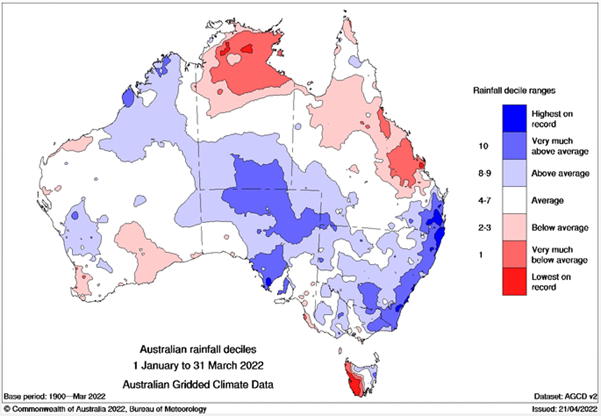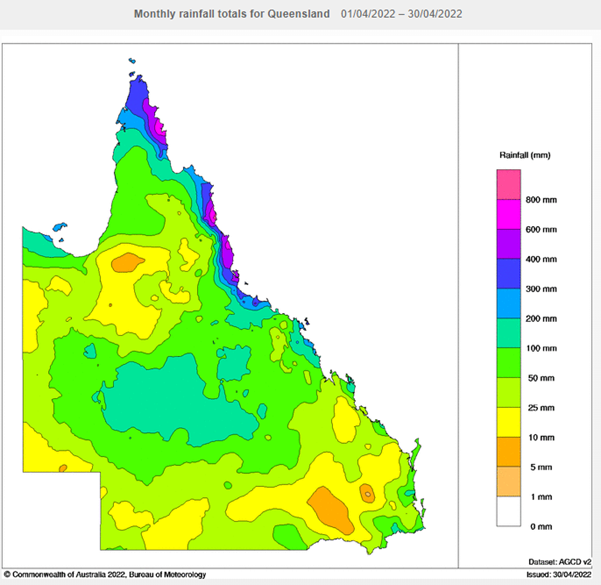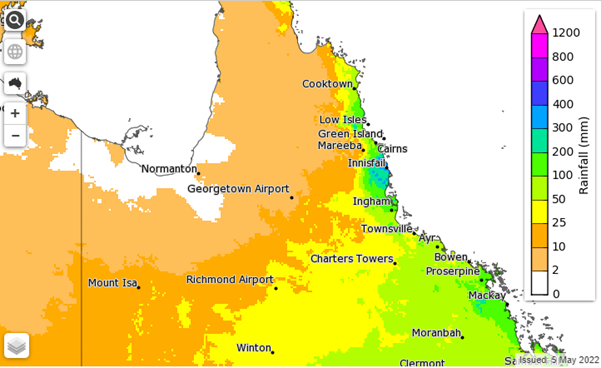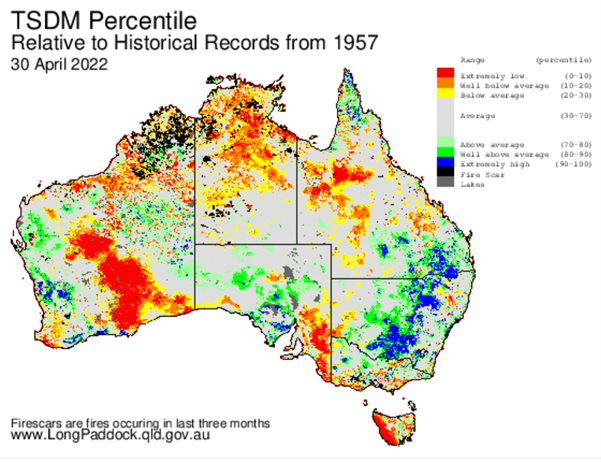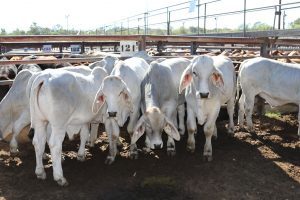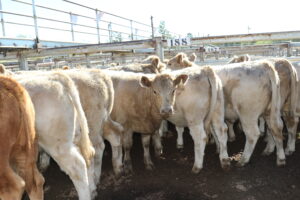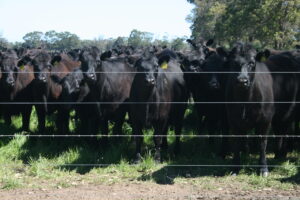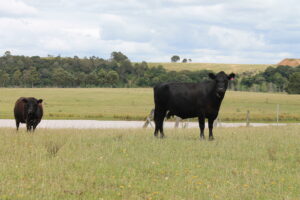It recently looked like the monsoon season for cattle country in central & far north QLD and the NT was not looking too promising, despite flooding rains in some parts of the state. That has all changed with historically high rainfall over April quenching the thirsty land. But did it all come in too late to make a material difference to pastures?
In early April, we talked about how the Monsoon in northern cattle country in early 2022 was running well below par, at Decile 1-3 levels over January to March (figure 1), and that northern cattle were beginning to flow south into saleyards earlier than usual.
April has seen quite a dramatic turnaround though, with most of northern and central QLD being served a generous helping of rainfall that ranked in the top 20% of years in a historical sense. (figure 2)
However, while historically high rainfall sounds amazing in theory, in reality, the amount of rain that fell across the majority of Northern QLD was just 50-100mm, though there was a large swathe of central QLD that received 200mm.
It’s not just this April that is looking good though. The BOM outlook for July to August paints a very positive picture, of 70-80%+ chance of above median rainfall for north QLD in the June to July three month period . Under a 75% probability scenario though, this only equates to a fairly lacklustre amount of rain in the range of 10-50mm over the period in a lot of areas however. (figure 3)
We do get fairly excited about medium range BOM forecasts, as they are probably the best view we have available, but the fact is that historically, their performance in forecasting the fortunes of northern Australia is not all that great. Forecast accuracy in getting it right for wet, dry and average years, sits at a fairly dismal 45-65%, and is consistently well below that of what is applicable to southern QLD.
In the end though, all we need to know if this renewal of rainfall is likely to lead to improved fodder positions in northern QLD and help to keep the great Aussie cattle rebuild plow on, carrying high prices along on its back.
The bulk of the growth pattern of native grass pastures in QLD is confined to wet season/summer periods between September and April and is generally negligible over the autumn to winter period. As such, the extra rain won’t do much for rangeland pastures- any growth lost over the start of the year due to dry conditions just can’t be gained back over the next five months. Overall, the Qld Government Aussie Grass model suggests that pasture biomass is average to below average as of 30 April 2022, which indicates that most northern cattle producers aren’t set up for an exceptional season ahead by any means. (figure 4) This probably won’t be translating into sustained strong demand for young restocker cattle.
What does it mean?
April precipitation in northern cattle country has staged a sudden turnaround and has a good winter ahead of it according to BOM forecasts. Either way, it probably won’t matter, as the rangeland pasture growing season in QLD is confined to the summer months, and any losses over Q1 cannot be earned back- the opportunity has passed. The Aussie Grass model says that the northern pasture biomass position is probably worse than it was at the same time last year, so a strong rush from the north to restock cattle isn’t looking likely.
Have any questions or comments?
Key Points
- Despite historically high April rainfall in parts of north QLD & the NT, it may have come too late for good winter pasture growth.
- Aussie cattle herd rebuild may not get an extra push from far northern cattle country.
- Historically high rainfall forecasts during QLD dry season doesn’t add up to many millimeters of rain, and BOM forecasts for north QLD are fairly unreliable.
Click on figure to expand
Click on figure to expand
Click on figure to expand
Click on figure to expand
Data sources: BOM, QLD government





